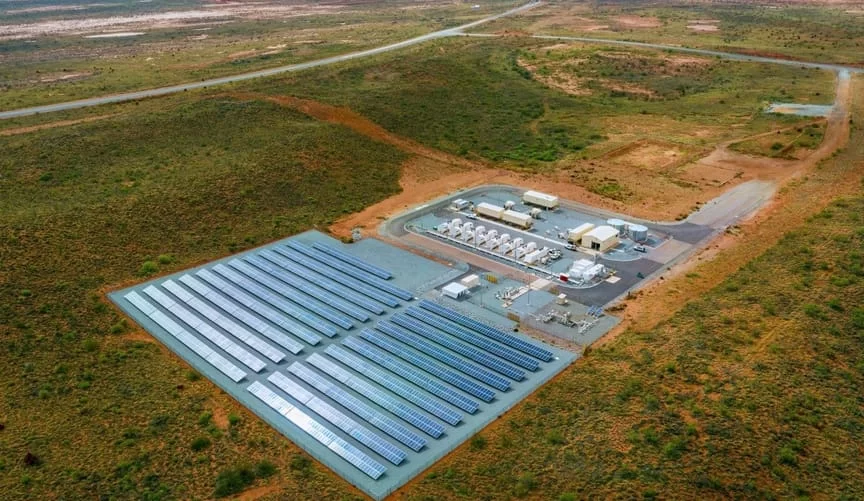Microgrid Solutions: Revolutionizing Energy Supply and Management
In the contemporary landscape of the global energy sector, microgrid solutions have emerged as a revolutionary force, fundamentally transforming the way we approach energy supply and management. A microgrid is a localized energy system that can operate independently of the traditional centralized grid or in conjunction with it, offering a flexible and resilient approach to meeting the energy needs of a specific community, facility, or region.
The impetus behind the development and adoption of microgrid is multi-faceted. One of the primary drivers is the increasing demand for reliable and uninterrupted power supply. In an era where our reliance on electricity is at an all-time high, disruptions due to natural disasters, grid failures, or other unforeseen events can have severe consequences for businesses, critical infrastructure, and the daily lives of individuals. Microgrids offer a degree of autonomy and redundancy, ensuring that power is maintained even in the face of external disruptions.
Another significant factor is the growing integration of renewable energy sources. Solar panels, wind turbines, and other forms of clean energy are often more easily incorporated into a microgrid framework. This allows for greater utilization of locally available renewable resources, reducing dependence on fossil fuels and contributing to the global efforts to mitigate climate change.

The architecture of a microgrid typically comprises a combination of power generation sources, energy storage systems, and intelligent control and management infrastructure. Generation sources can include conventional fossil fuel-based generators, as well as renewable options like solar photovoltaic arrays and wind turbines. Energy storage, often in the form of batteries or flywheels, plays a crucial role in balancing supply and demand, storing excess energy during periods of low consumption and releasing it when needed.
Intelligent control systems are the brain of the microgrid, monitoring energy production and consumption in real-time and making dynamic decisions to optimize the operation of the system. These systems can intelligently switch between different power sources, manage energy flows, and ensure seamless integration with the main grid when necessary.
One of the key advantages of microgrid solutions is their ability to enhance energy efficiency. By closely matching generation to local demand and minimizing transmission losses associated with long-distance power transfer, microgrids can achieve higher overall efficiency compared to traditional centralized grids. This not only leads to cost savings but also reduces the environmental footprint of energy consumption.
In remote and off-grid locations, microgrids have proven to be a game-changer. Islands, rural communities, and mining operations that were previously dependent on expensive and environmentally unfriendly diesel generators can now establish sustainable and self-sufficient microgrid systems powered by renewable energy. This not only improves the quality of life in these areas but also opens up new economic opportunities.
Microgrids also offer significant benefits in the context of commercial and industrial facilities. Factories, data centers, and campuses can implement microgrid solutions to achieve greater control over their energy costs and reliability. For example, a manufacturing plant can operate its microgrid during peak hours when electricity prices are high, using on-site generation and stored energy, and then switch back to the grid during off-peak hours to recharge the storage systems.
The rise of microgrid solutions is not without challenges. Interoperability issues between different components and systems within a microgrid need to be addressed to ensure seamless integration and operation. Regulatory and policy frameworks in many regions still lag behind the technological advancements, creating uncertainties and barriers to widespread adoption. Additionally, the upfront costs of implementing microgrid infrastructure can be significant, although the long-term economic and environmental benefits often outweigh these initial investments.
Looking forward, the future of microgrid solutions appears extremely promising. Advances in technologies such as energy storage, power electronics, and artificial intelligence are expected to further enhance the performance and functionality of microgrids. The concept of virtual microgrids, where multiple distributed energy resources are aggregated and managed as a single virtual entity, is also emerging as an area of significant potential.
Furthermore, as the world transitions towards a more decentralized and sustainable energy future, microgrids are likely to play an increasingly crucial role. They have the potential to transform our energy systems from large, centralized models to a network of interconnected, intelligent, and locally optimized microgrids, providing a more resilient, efficient, and environmentally friendly approach to meeting our energy needs.
In conclusion, microgrid solutions represent a revolutionary paradigm shift in energy supply and management. They offer a practical and sustainable means of addressing the challenges of energy reliability, efficiency, and the integration of renewable sources. As we continue to navigate the complex and evolving energy landscape, the importance and potential of microgrids will only continue to grow, shaping a more sustainable and resilient energy future for all.
